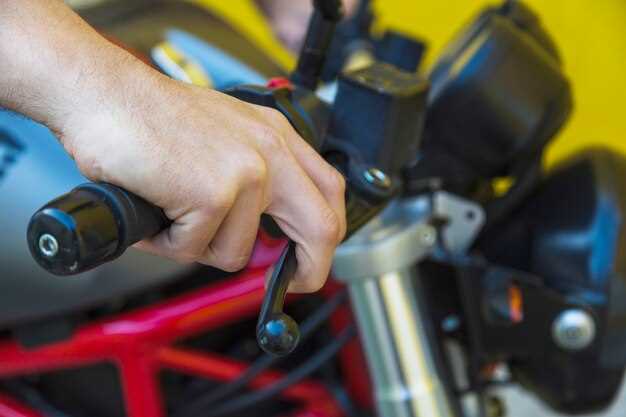
Maintaining your motorcycle is crucial for ensuring its longevity and optimal performance. One of the key components that play a significant role in engine efficiency is the spark plug. These small, yet vital parts are responsible for igniting the air-fuel mixture in the engine’s combustion chamber, ultimately affecting the overall ignition process. A well-maintained spark plug can enhance fuel efficiency, improve engine response, and reduce harmful emissions.
Over time, spark plugs can wear out, leading to a range of problems such as misfiring, reduced power, and increased fuel consumption. Therefore, regular maintenance and timely replacement of spark plugs are essential for keeping your motorcycle running smoothly. In this guide, we’ll walk you through the complete process of replacing spark plugs, equipping you with the necessary knowledge to tackle this task confidently and efficiently.
By understanding the steps involved in spark plug replacement, you ensure that your motorcycle remains in peak condition, allowing you to enjoy the ride without worry. Let’s dive into the essential tools and techniques you need to perform this important maintenance task successfully.
Choosing the Right Spark Plugs for Your Motorcycle Model

Selecting the appropriate spark plugs for your motorcycle is crucial for optimal performance and longevity. Each motorcycle model may have specific requirements, making it essential to consult your owner’s manual or check with the manufacturer for the recommended specifications.
When choosing spark plugs, consider the heat range. This indicates the plug’s ability to dissipate heat. A plug that runs too hot may lead to engine damage, while one that runs too cold can result in fouling. It’s important to find a balance that fits your motorcycle’s operating conditions.
Another key factor is the electrode design. Different designs, such as single, double, or multiple ground electrodes, can influence ignition efficiency and spark plug life. In particular, iridium and platinum plugs offer improved performance and longevity over standard copper plugs, making them a popular choice for modern motorcycles.
Additionally, check the thread size and reach of the spark plugs. These dimensions vary by model and incorrect sizes can lead to serious engine issues. It is essential to ensure that the spark plugs fit properly to prevent misfires and ensure efficient combustion.
Finally, always replace spark plugs in pairs or sets to maintain even performance across cylinders. Investing in the right spark plugs guarantees effective maintenance of your motorcycle and prolongs its operational lifespan, while also enhancing overall riding experience.
Step-by-Step Guide to Removing Old Spark Plugs
Before initiating the spark plug removal process, ensure that your motorcycle is parked on a level surface and turned off. Allow the engine to cool down to avoid burns from hot components.
Gather the necessary tools for the maintenance task: a spark plug socket, a ratchet wrench, an extension bar, and a torque wrench. Having these tools ready will facilitate a smoother removal process.
First, locate the spark plugs on your motorcycle. Depending on your engine type, they may be situated under the fuel tank or near the cylinder head. Consult your owner’s manual for precise locations, as this can vary significantly between models.
Once the spark plugs are accessed, disconnect the ignition wires carefully. Grasp the wire boot and twist gently while pulling to avoid damaging the wire. Avoid pulling on the wire itself; always pull from the boot to maintain integrity.
Next, use the spark plug socket and ratchet wrench to unscrew the old spark plugs. Insert the socket over the spark plug, ensuring a snug fit, and turn the wrench counterclockwise. Initially, apply moderate pressure to break the seal. Once loosened, continue turning by hand until the spark plug is completely removed from the cylinder head.
Inspect the removed spark plugs for signs of wear or carbon buildup, as this can indicate ignition issues or engine problems. A proper assessment will guide your maintenance decisions for the motorcycle.
Repeat the process for all spark plugs that require replacement. Ensure that the workspace is clean and free from debris to prevent contamination of the engine components during reinstallation.
Proper Installation Techniques for New Spark Plugs

Installing new spark plugs correctly is crucial for optimal motorcycle performance and longevity. Begin by ensuring that the engine is cool to prevent damage to the threads during installation. Gather the necessary tools, including a spark plug socket, a torque wrench, and anti-seize compound for better sealing.
Before inserting the new plug, inspect its condition, checking for any damage or dirt on the tip. Gently thread the spark plug into the cylinder head by hand, avoiding cross-threading which can cause significant issues. Once the plug is properly seated, use a torque wrench to tighten it to the manufacturer’s specified torque setting. This step is vital, as over-tightening can lead to stripped threads or broken plugs.
After achieving the correct torque, connect the ignition wire securely to the spark plug, ensuring a good electrical contact. Regular maintenance, including checking spark plugs every few thousand miles, will help maintain engine efficiency and performance. Proper installation not only improves your motorcycle’s operation but also contributes to a smoother ride and improved fuel economy.
